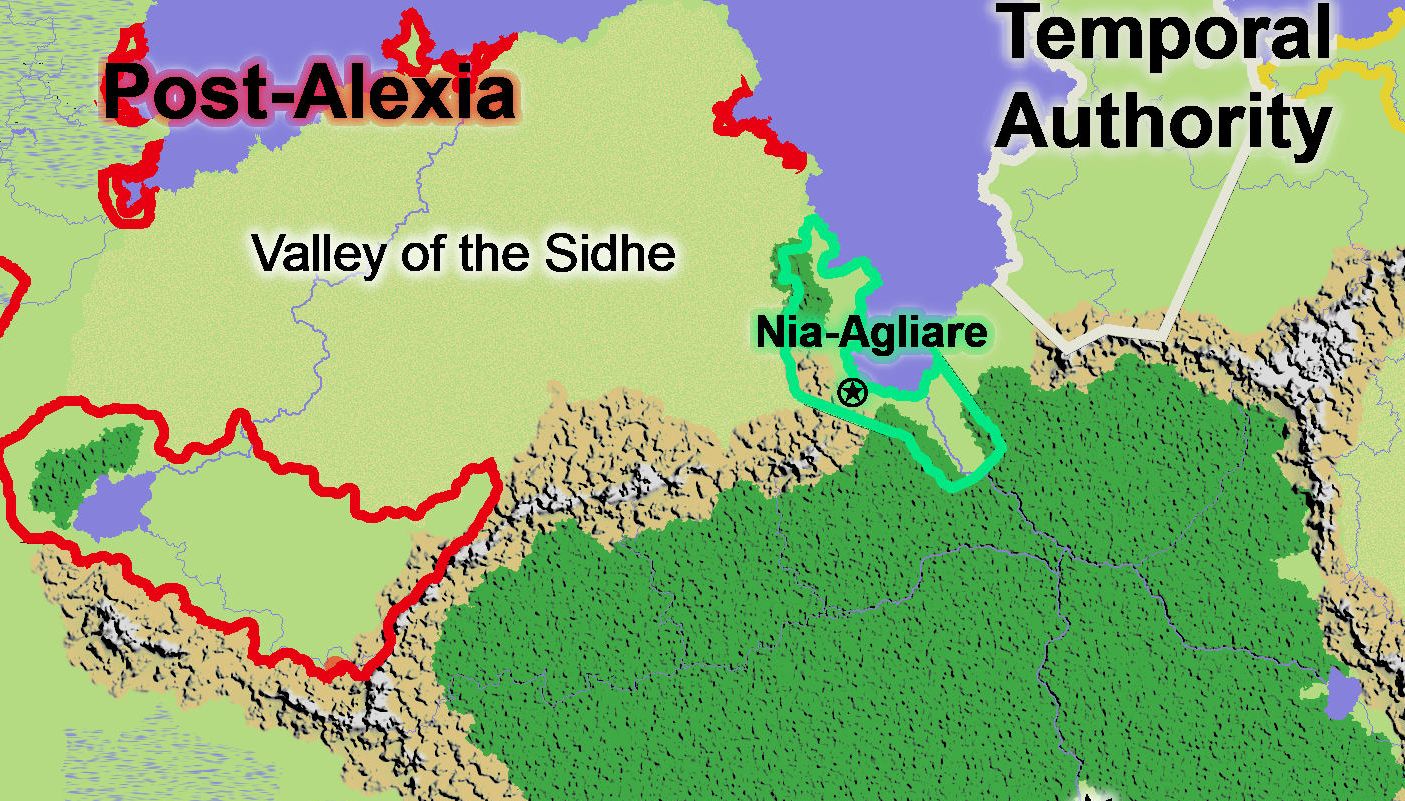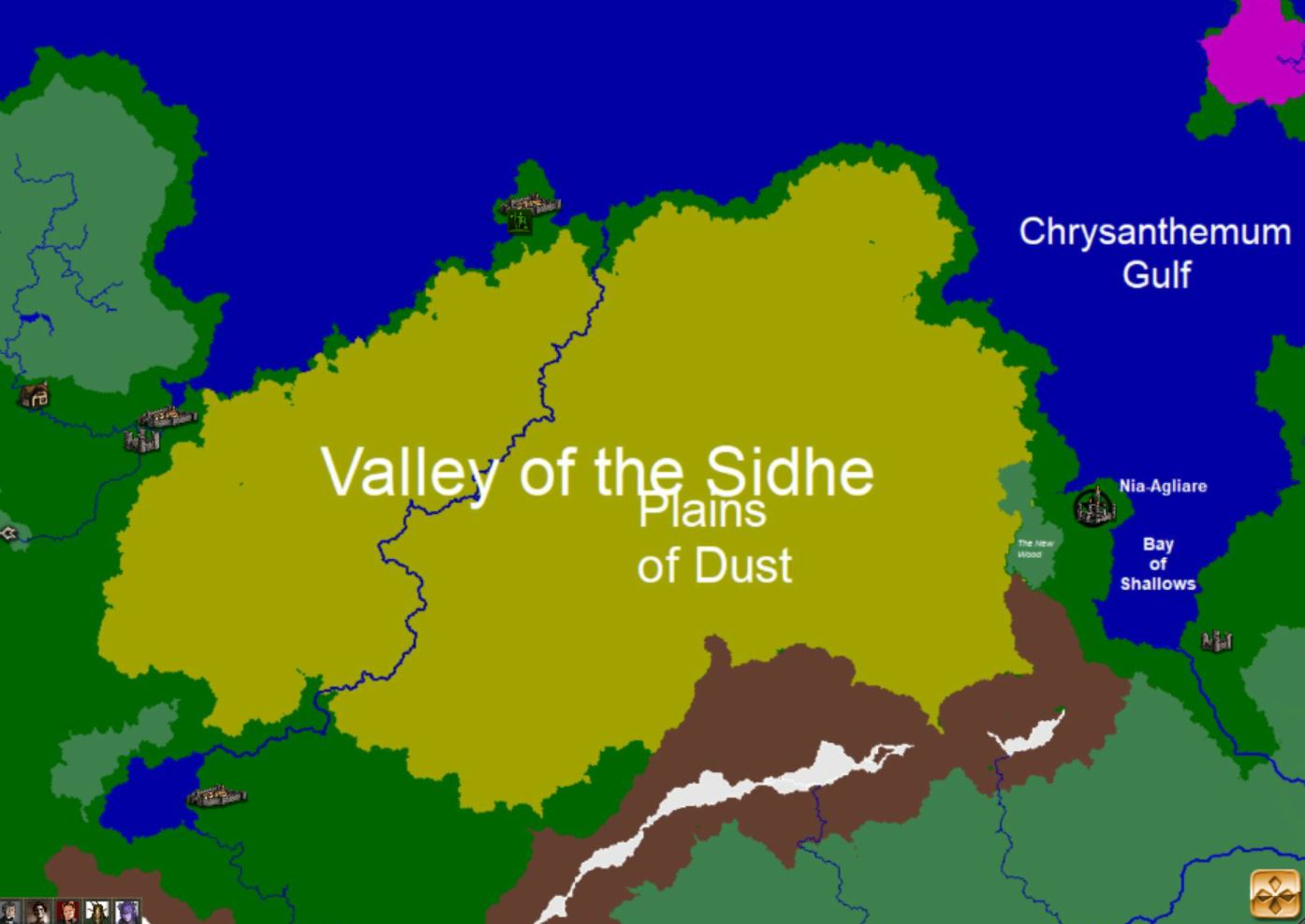Valley of the Sidhe: Difference between revisions
mNo edit summary |
No edit summary |
||
| (7 intermediate revisions by 3 users not shown) | |||
| Line 1: | Line 1: | ||
Although the name is now bitterly ironic, it was not always so. In the most ancient of times, this was the [[Sidhe|Elven]] homeland and here stood a great forest though now it is a large and still-expanding silt desert also known as the Valley of Dust or Valley of Sand. When the Elves fled to [[Sidhe-Praxen]] after the [[Demi-Sidhe Revolt]] led to their ejection from the region, the Humans and [[Half-Elves who lived there began to rapidly "improve" the area. The within a few centuries the forests had been clear-cut away, fueling the powerful rise the eastern city-states of Old [[Alexia]], several of which have long since been swallowed by the sand. The region prospered under cultivation, and was one of the major theaters of the [[Prophets' War]]. Eventually, after centuries of unsustainable overproduction, desertification began to set in. | |||
Although the discovery in Western Alexia of a gold mine in the 1100s(?) kept the Alexian state lurching forward, signs of the decline were evident as early as the 1000s. By the late 1200s, some cities had been completely abandoned and the growing desert was causing political instability in Alexia. By the mid-1300s, the instability and large refugee migrations to [[Wydmoor]] and [[Odessa]] was severe enough to prompt Odessa's military occupation of Western Alexia in the late 1300s, leading to the Wydmoor-Odessan conflict that would usher in the [[War of Schism]]. | |||
By the 1500s it has covered much of the former nation of [[Alexia]] with only a few settlements remaining scattered along the coasts to the north or mountains to the south. While the reason for its' expansion is much debated a consensus has not been reached and some fear mongers have suggested it will eventually over take the entire Mainland. | |||
At some point in the last century, a forest sprang up toward its East side. It is considered haunted, and to some an omen more pressing than the Valley itself. | |||
[[file:Valleyofthesidhe.jpg]] | [[file:Valleyofthesidhe.jpg]] | ||
[[File:bh18_valleyofdust.jpg]] | |||
Latest revision as of 07:44, 1 November 2024
Although the name is now bitterly ironic, it was not always so. In the most ancient of times, this was the Elven homeland and here stood a great forest though now it is a large and still-expanding silt desert also known as the Valley of Dust or Valley of Sand. When the Elves fled to Sidhe-Praxen after the Demi-Sidhe Revolt led to their ejection from the region, the Humans and [[Half-Elves who lived there began to rapidly "improve" the area. The within a few centuries the forests had been clear-cut away, fueling the powerful rise the eastern city-states of Old Alexia, several of which have long since been swallowed by the sand. The region prospered under cultivation, and was one of the major theaters of the Prophets' War. Eventually, after centuries of unsustainable overproduction, desertification began to set in.
Although the discovery in Western Alexia of a gold mine in the 1100s(?) kept the Alexian state lurching forward, signs of the decline were evident as early as the 1000s. By the late 1200s, some cities had been completely abandoned and the growing desert was causing political instability in Alexia. By the mid-1300s, the instability and large refugee migrations to Wydmoor and Odessa was severe enough to prompt Odessa's military occupation of Western Alexia in the late 1300s, leading to the Wydmoor-Odessan conflict that would usher in the War of Schism.
By the 1500s it has covered much of the former nation of Alexia with only a few settlements remaining scattered along the coasts to the north or mountains to the south. While the reason for its' expansion is much debated a consensus has not been reached and some fear mongers have suggested it will eventually over take the entire Mainland.
At some point in the last century, a forest sprang up toward its East side. It is considered haunted, and to some an omen more pressing than the Valley itself.

